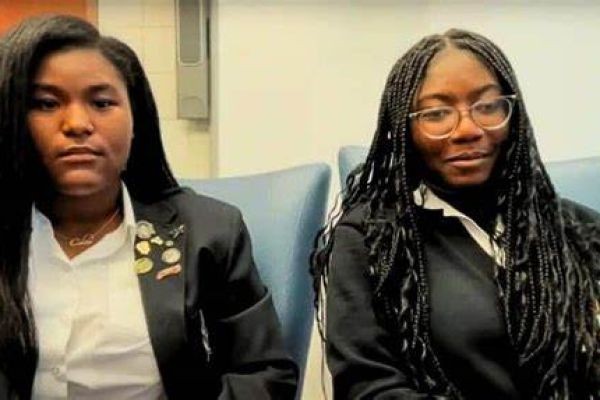For centuries, mathematicians were convinced that a purely trigonometric proof of Pythagoras’ theorem was impossible. Enter two Louisiana high school students who just might have proved them all wrong. Their groundbreaking discovery has stunned the mathematical world, igniting debate and reshaping our understanding of geometry.
Defying the Impossible
Pythagoras’ theorem—one of the most fundamental principles in mathematics—states that in a right triangle, the sum of the squares of the two shorter sides equals the square of the hypotenuse. Thousands of proofs exist, but one thing remained certain: trigonometry couldn’t be used to prove it without falling into circular reasoning.
The reason? Trigonometry itself is built upon Pythagoras’ theorem. Trying to prove it using sine, cosine, or tangent was like using the answer to solve the question. It simply couldn’t be done—or so everyone thought. But Ne’Kiya Jackson and Calcea Johnson weren’t convinced.
A Historic Breakthrough
At the Mathematical Association of America’s annual conference in March 2023, Jackson and Johnson presented something that had been deemed impossible: a trigonometric proof of Pythagoras’ theorem that doesn’t rely on the theorem itself.
Instead of using Pythagoras’ theorem as a foundation for trigonometric functions, they built their proof using angle properties and proportional relationships—breaking free from the supposed limitations of previous attempts. Even more astonishing, their approach didn’t just yield one proof, but opened the door to multiple variations.
The Mathematical Community Reacts
The response? Shock, admiration, and an immediate re-evaluation of long-held assumptions. Scholars who once dismissed the possibility of such a proof were left rethinking their stance.
Their work quickly gained recognition, even landing a feature in the prestigious American Mathematical Monthly. Mathematician Tom Murdoch hailed it as a game-changer, with potential implications beyond geometry and trigonometry.
The Future of Two Young Trailblazers
Despite making history, Jackson and Johnson remain humble and focused on their futures:
Calcea Johnson is now studying environmental engineering at Louisiana State University, hoping to inspire the next generation of young thinkers.
Ne’Kiya Jackson is pursuing a pharmacy degree at Xavier University of Louisiana, proving that persistence and curiosity can break barriers in any field.
Their discovery sends a powerful message: innovation knows no age, and the next great scientific breakthrough could come from anyone bold enough to challenge the status quo.








